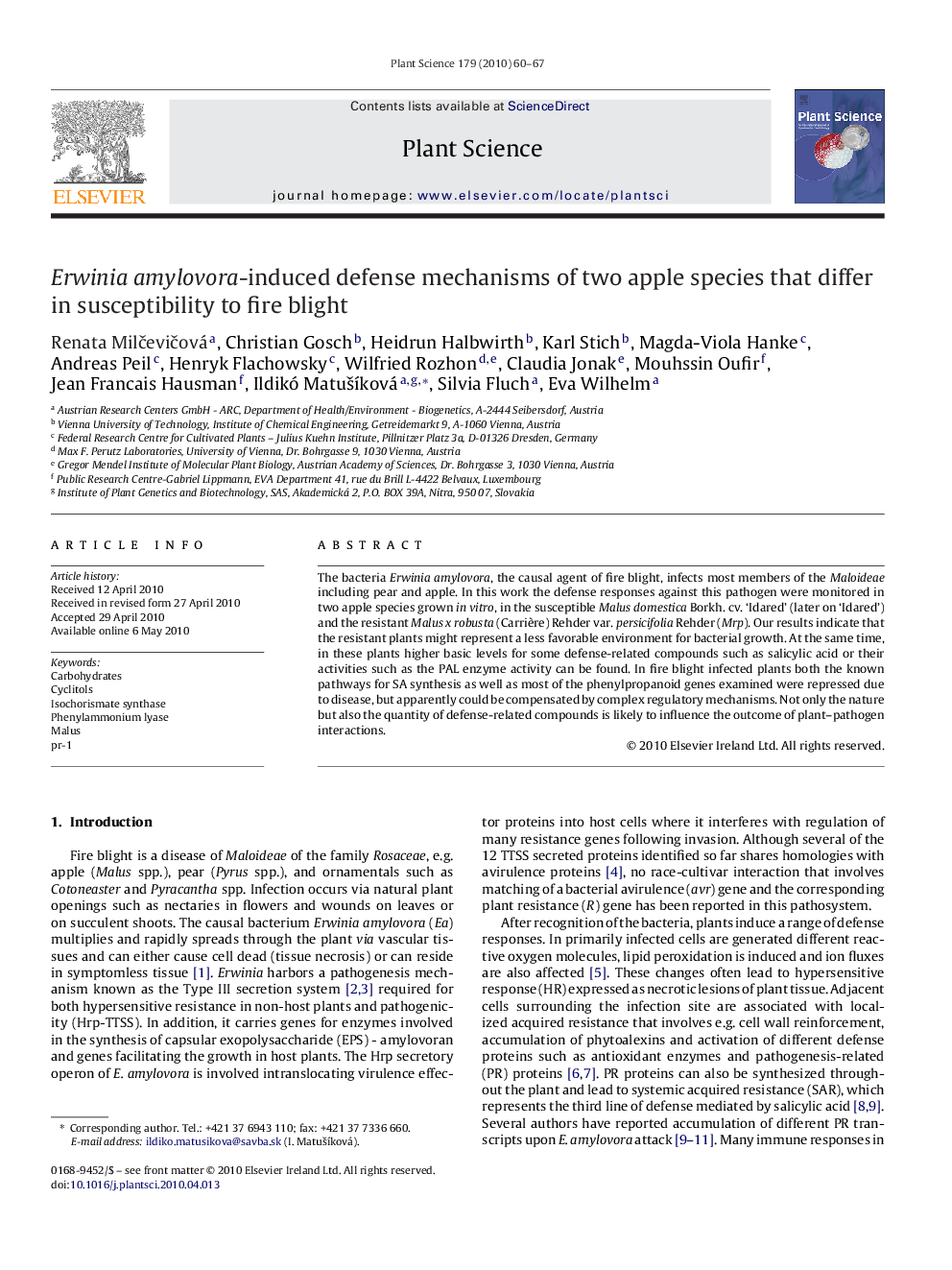| Article ID | Journal | Published Year | Pages | File Type |
|---|---|---|---|---|
| 2017813 | Plant Science | 2010 | 8 Pages |
The bacteria Erwinia amylovora, the causal agent of fire blight, infects most members of the Maloideae including pear and apple. In this work the defense responses against this pathogen were monitored in two apple species grown in vitro, in the susceptible Malus domestica Borkh. cv. ‘Idared’ (later on ‘Idared’) and the resistant Malus x robusta (Carrière) Rehder var. persicifolia Rehder (Mrp). Our results indicate that the resistant plants might represent a less favorable environment for bacterial growth. At the same time, in these plants higher basic levels for some defense-related compounds such as salicylic acid or their activities such as the PAL enzyme activity can be found. In fire blight infected plants both the known pathways for SA synthesis as well as most of the phenylpropanoid genes examined were repressed due to disease, but apparently could be compensated by complex regulatory mechanisms. Not only the nature but also the quantity of defense-related compounds is likely to influence the outcome of plant–pathogen interactions.
